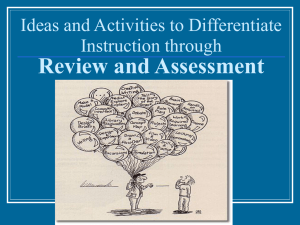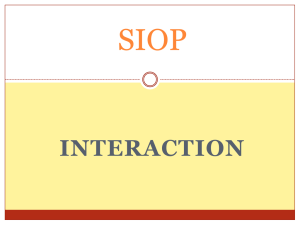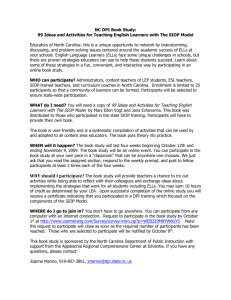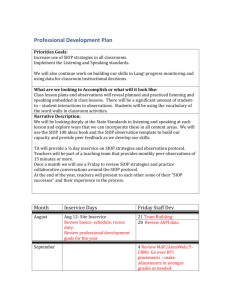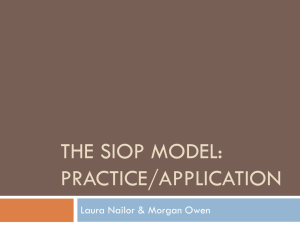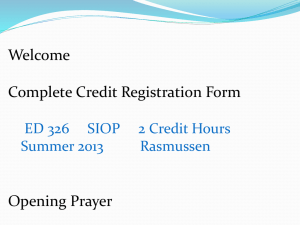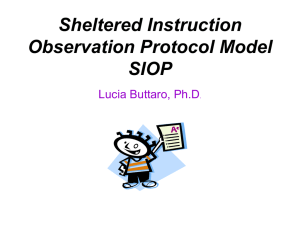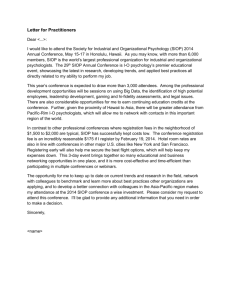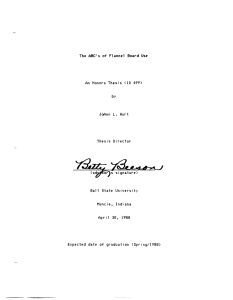Addition Stories - Center for Applied Linguistics
advertisement
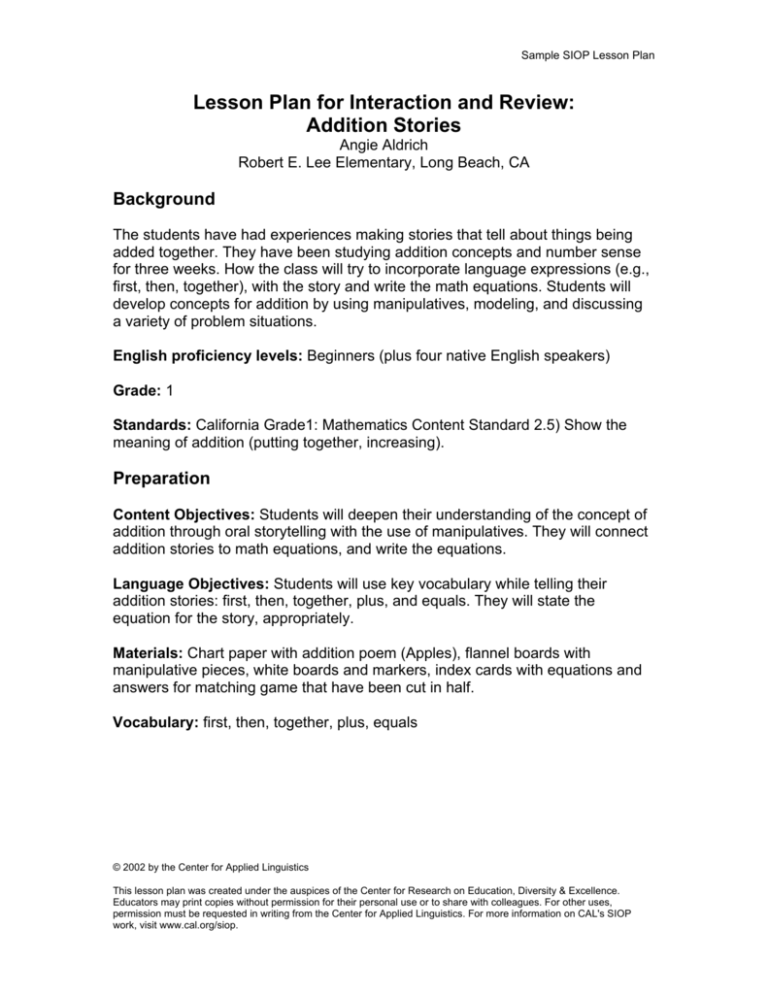
Sample SIOP Lesson Plan Lesson Plan for Interaction and Review: Addition Stories Angie Aldrich Robert E. Lee Elementary, Long Beach, CA Background The students have had experiences making stories that tell about things being added together. They have been studying addition concepts and number sense for three weeks. How the class will try to incorporate language expressions (e.g., first, then, together), with the story and write the math equations. Students will develop concepts for addition by using manipulatives, modeling, and discussing a variety of problem situations. English proficiency levels: Beginners (plus four native English speakers) Grade: 1 Standards: California Grade1: Mathematics Content Standard 2.5) Show the meaning of addition (putting together, increasing). Preparation Content Objectives: Students will deepen their understanding of the concept of addition through oral storytelling with the use of manipulatives. They will connect addition stories to math equations, and write the equations. Language Objectives: Students will use key vocabulary while telling their addition stories: first, then, together, plus, and equals. They will state the equation for the story, appropriately. Materials: Chart paper with addition poem (Apples), flannel boards with manipulative pieces, white boards and markers, index cards with equations and answers for matching game that have been cut in half. Vocabulary: first, then, together, plus, equals © 2002 by the Center for Applied Linguistics This lesson plan was created under the auspices of the Center for Research on Education, Diversity & Excellence. Educators may print copies without permission for their personal use or to share with colleagues. For other uses, permission must be requested in writing from the Center for Applied Linguistics. For more information on CAL's SIOP work, visit www.cal.org/siop. Sample SIOP Lesson Plan Motivation Begin by reading the addition poem, Apples, that students have read previously. Refer to pictures for added visual support. As a class, read the poem three times. Focus on key vocabulary. Presentation Review the objectives and tell students that they will be making addition stories using the flannel boards and practicing using three important words (first, then, together). Explain that they will also be writing the equation that goes with the addition story. Using a flannel board, model how to tell an addition story using the three key vocabulary words. Write the corresponding equation on a white board. Check for understanding during the modeling by including students in the story telling. Ask students to tell a story and help with writing the equation. Practice Arrange students in heterogeneous groups of four and give each group one white board and marker. Tell an addition story using the flannel board and ask student groups to work together to write the corresponding equation. Only one student may write, while the other three provide guidance. Have students then pass the white board and marker to a teammate and repeat the process. Continue until all group members have had a turn writing an equation. During this time, circulate and assess student understanding and correct misconceptions among the teams. Application To help students apply their math knowledge, conduct an inside/outside circle activity. The students on the inside of the circle hold the white board and the marker. The students of the outside circle hold the flannel board. Ask the students with the flannel board to tell an addition story to their inside partner, using the words first, then, and together. As they finish their story, have the partner write the equation to match the addition story. Once complete, instruct the partners to exchange materials and begin again. Repeat this process so that the students have numerous opportunities to practice integrating the content and the language objectives by telling an addition story. © 2002 by the Center for Applied Linguistics This lesson plan was created under the auspices of the Center for Research on Education, Diversity & Excellence. Educators may print copies without permission for their personal use or to share with colleagues. For other uses, permission must be requested in writing from the Center for Applied Linguistics. For more information on CAL's SIOP work, visit www.cal.org/siop. Sample SIOP Lesson Plan Review Distribute half an index card to each student for a mix and match activity. Half of the students will receive the half of the index card with an equation, while the other half of the students will receive the half of the index card that has the equation’s answer. Ask two students to model the trading process by asking, “What do you have?” and replying, “ I have six plus two” (or whatever the card says). Next, ask students to reverse the questions, and then have them say, “Let’s trade.” Conduct the activity and have students begin mixing. Provide enough time so students have a chance to read many of the different equations and answers. Say, “Freeze!” to stop the mixing and then tell the students to find their match. Those that have matched move to sit on the edge of the rug, while those that are still seeking their match remain in the center of the rug. When all students have found their matches, ask each team to report out their equation and their answer. If desired, repeat the entire process for additional practice. Teacher Notes Scaffold the lesson by having the key words written on the board as a visual cue for the students’ storytelling. Allow for students to receive support and assistance from peers during group configurations. Students will participate in whole group as well as partner work during the lesson. The grouping should be heterogeneous by language and ability to allow for optimal interaction. During the circle formation, the inside group should be the students requiring more support, while the outside circle should be the group that can give assistance. By establishing the groups in this manner, the circles can rotate, while the heterogeneous partnering will remain. © 2002 by the Center for Applied Linguistics This lesson plan was created under the auspices of the Center for Research on Education, Diversity & Excellence. Educators may print copies without permission for their personal use or to share with colleagues. For other uses, permission must be requested in writing from the Center for Applied Linguistics. For more information on CAL's SIOP work, visit www.cal.org/siop.
